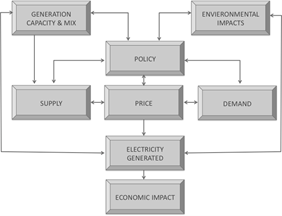Energy Efficiency
Energy Efficiency Programs and Projects
Energy Code
A new building energy code went into effect March 25, 2021. Builders will now need to comply with the requirements of the 2018 International Energy Conservation Code (2018 IECC) and New Mexico Construction Industries Commission (CID) Amendments. One of these amendments, found in the 2018 New Mexico Residential Energy Conservation Code (NMRECC), 14.7.6 NMAC, details allowable compliance materials. The manual and worksheets below are included in the list of approved code compliance materials. The manual provides useful construction materials and assembly data and guidance on how to calculate and show code compliance for non-standard homes, including those employing passive solar features. The tradeoff worksheet and the passive solar worksheet are detailed in the manual and are available in electronic form. The tradeoff worksheet includes imbedded calculations and code compliance checks to ease the use of the alternate code compliance analysis. An additional appendix detailing more passive solar design information will be added to the manual in summer 2022.
The 2018 IECC energy code will save ($3) for every dollar ($1) invested. A single-family home will save an average of $402 in annual energy costs when compared to the requirement of the old 2009 New Mexico energy code based on a study conducted by the Pacific Northwest National Laboratory (PNNL). Commercial building owners will save from $5.89 to $37.47 for every ($1) invested based on the same PNNL study.
Updating to the 2018 IECC energy code was one of the objectives of Executive Order 2019-003 to achieve a statewide reduction in greenhouse gas emissions of at least 45% by 2030 as compared to 2005 levels. Adopting the 2018 IECC will reduce greenhouse gases by over 27,000 tons of carbon dioxide per year based on the PNNL study.
A new service started in 2022 provides technical assistance on the practical value of energy codes. The service, referred to as the Energy Code Circuit Rider provides assistance to the residential and commercial building industry for the 2018 IECC and the ASHRAE standard 90.1. This effort is funded by the Southwest Energy Efficiency Project from the U.S. Department of Energy (DOE) with collaboration of EMNRD and CID. The Circuit Rider can assist building departments, building officials, residential builders, commercial builders, design and construction professionals, HERS Raters, and others in the buildings industry with energy code assistance. For NM Energy Conservation Code assistance please visit: https://swenergy.org/nm-energy-code-circuit-rider.
Energy Savings Performance Contracts
The Department of Energy defines a net-zero building as a building that “produces enough renewable energy to meet its own annual energy consumption requirements, thereby reducing the use of non-renewable energy in the building sector.” The first step towards this goal is to understand and minimize the total energy usage of the facility, whether this is a new building or an existing building. Energy efficient systems can be funded in partnership with an Energy Service Company (ESCO) in the form of a Guaranteed Energy Savings Performance Contract (ESPC). The ESCO conducts a comprehensive facility energy audit and identifies options for capital improvements to save energy. Taken together, these capital improvements can lower the overall energy consumption of a facility. The ESCO designs, constructs, and arranges financing for the project, and the facility owner repays the ESCO through energy cost savings over the term of the contract. After the end of the contract, cost savings accrue to the facility owner.
ECMD has approved thirty-five Guaranteed Energy Savings Performance Contracts (GESPC) totaling more than $250 million in project investment since 2013. This program has been utilized by local governments (17 projects), the Higher Education Department (10 projects), K-12 schools (4 projects), and other government agencies (4 projects). These projects have resulted in more than $11.5 million in annual savings to State entities while reducing the total utility consumption an average of 31.9% per project. These projects also deployed renewable energy generation totaling more than 20 million kWh of electricity. ECMD has also approved two microgrid projects that will provide power to a community college and a State Park. ECMD will proudly continue to provide technical assistance to any State entity that inquiries about reducing their energy consumption.
State Price Agreements:
Financial Resiliency through Energy Efficiency
In 2019, ECMD was awarded a grant from the U.S. Department of Energy titled Financial Resiliency through Energy Efficiency (FREE). This grant funded the development of a systems dynamic model of the state of New Mexico. This model examines interactions between supply and demand of energy, environmental factors, energy use in the electricity sector, and revenue impacts over time. The model includes four stylized energy efficiency programs targeting residential customers to show what the impact of these programs would be. Results are aggregated and reported at the New Mexico Council of Governments district level. The below diagram gives a high-level overview of the interactions in the model:

The model was completed in March of 2021.
During the next stage of the grant, ECMD will conduct 8 virtual stakeholder meetings around the state. In these meetings, the results from the model will be presented with a focus on regional impacts, and stakeholders can ask questions or raise concerns. A key takeaway from these meetings will be any barriers that stakeholders foresee (regulatory or otherwise) with pursuing any of these programs with a legislative agenda.
The report derived from the stakeholder meeting will serve as a guide to pursing a legislative agenda around energy efficiency.
